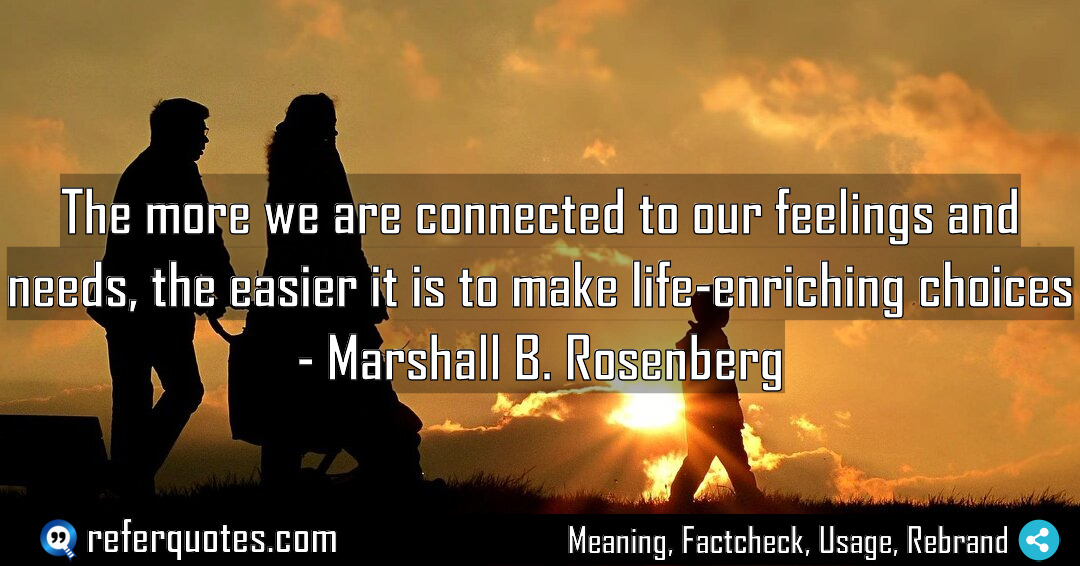
You know, the more we are connected to our feelings, the more we stop fighting ourselves and start making choices that genuinely serve us. It’s like having an internal compass that actually works.
Share Image Quote:
Table of Contents
Meaning
At its heart, this quote is about self-awareness as the ultimate tool for effective decision-making. When you know what you’re truly feeling and needing, your choices stop being reactive and start being strategic.
Explanation
Let me break this down from my own experience. For years, I saw decision-making as a purely logical process. But that’s only half the story. The real magic, the real leverage, comes from understanding the emotional data. Your feelings are signals. Your needs are the underlying values. When you can decode those signals—when you can say, “I’m feeling frustrated because my need for respect isn’t being met”—the path forward becomes almost obvious. You’re no longer just putting out fires. You’re building a fireproof life. It’s the difference between choosing a job for the title and choosing one that fulfills your need for growth and contribution. Huge, huge difference.
Quote Summary
Reading Level70
Aesthetic Score75
Origin & Factcheck
This is straight from Marshall B. Rosenberg’s seminal work, “Nonviolent Communication: A Language of Life.” The book first came out in the United States back in 1999, and this concept is a cornerstone of the entire NVC methodology. You sometimes see similar sentiments in mindfulness circles, but this specific phrasing and its practical framework are uniquely Rosenberg’s.
Attribution Summary
Where is this quotation located?
| Quotation | The more we are connected to our feelings and needs, the easier it is to make life-enriching choices |
| Book Details | Publication Year: 1999; ISBN: 9781892005038; Last edition: 3rd Edition (2015); Number of pages: 264. |
| Where is it? | Chapter 5: Taking Responsibility for Our Feelings, Page 84 (2015 edition) |
Context
In the book, this isn’t just a nice idea tucked away in a chapter. It’s the engine of the whole Nonviolent Communication process. Rosenberg presents this after he introduces the four components: observations, feelings, needs, and requests. This quote is the payoff—it explains *why* doing that internal work of identifying feelings and needs is so critically important. It’s the bridge between self-empathy and effective action.
Usage Examples
So, how does this play out in the real world? Let’s say you’re a manager and your team is missing deadlines. Instead of just feeling angry and issuing a blanket reprimand (a life-depleting choice), you get connected. You realize you feel anxious because your need for reliability and shared success isn’t being met. That clarity allows you to make a life-enriching choice: to have a compassionate, curious conversation to uncover the real blockers. See the shift? It’s transformative for leaders, parents, coaches… honestly, for anyone who has to make decisions that affect other people.
To whom it appeals?
Share This Quote Image & Motivate
Motivation Score85
Popularity Score80
Shareability Score80
FAQ
Question: This sounds self-centered. Isn’t it just about doing what feels good?
Answer: That’s a common misconception. It’s the opposite. When you’re clear on your own needs, you can consider others’ needs more effectively, without resentment or burnout. It’s the foundation for genuine compassion.
Question: What if I can’t figure out what I’m feeling or needing?
Answer: Start simple. Use a feelings and needs inventory—they’re easy to find online. It’s a skill that takes practice, like building a muscle. Just asking “What am I feeling?” is a powerful first step.
Question: How is this different from positive thinking?
Answer: Positive thinking can sometimes involve suppressing “negative” emotions. This is about embracing all your feelings as valuable data. It’s about authenticity, not forced optimism.
Similar Quotes
When we are internally connected to what we need, it fundamentally shifts our decision-making process from a place of reaction to one of clarity. It’s the difference between lashing out…
You know, “The more we are able to connect with what we are observing…” is really the whole game. It’s not fluffy self-help; it’s a practical framework for getting what…
Life-enriching communication asks us to give from the heart. It’s a game-changing mindset that transforms conflict into connection. Let’s break down what Rosenberg really meant by this. Table of Contents…
Life is more pleasant when we focus on what we need. It’s a simple but profound shift that turns frustration into clarity and blame into actionable steps. This idea, from…
Look, if you really sit with Tony Robbins’ idea that “Life is a gift…” it reframes everything. It’s not about just taking; it’s about your active, ongoing contribution to the…
